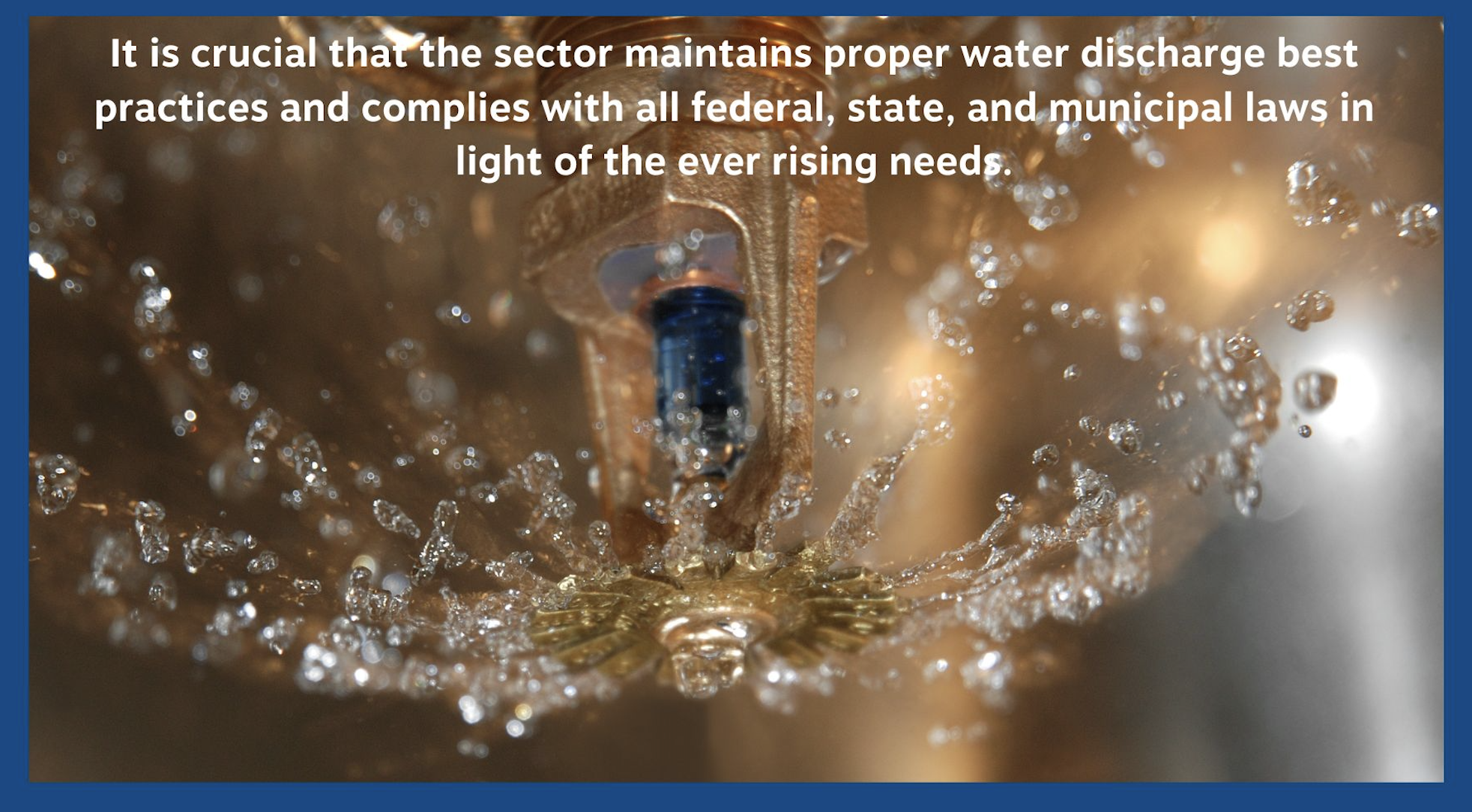INTRODUCTION: The industry has been concerned with water discharge for decades, but environmental consciousness continues to develop and presents new issues. Polyfluoroalkyl compounds (PFAs) are one of the most prevalent contaminants present in today’s water, and they are linked to illnesses of the immune system, reproduction, and cancer. AFFF has been used by the military, airports, and fire department, poisoning everything from food to water and the blood of living things. Federal, state, and local governments now mandate the filtering or collection of water discharged from fire suppression systems. This is due to restrictions on the use of PFAs and chlorinated water discharged from public water supplies.
Chemical pollutants such as corrosion inhibitors, lead, and other contaminants can be found in the water flow from fire sprinkler systems. It is essential that the sector maintains proper water discharge best practices and complies with all laws.
Environmental Issues With Inspection
While the industry has been concerned with water discharge for decades, with clear specifications on drain diameters, discharge locations, and ensuring the discharge does not cause damage, environmental consciousness continues to develop and presents the sector with numerous new issues. Drinking water and potential environmental pollutants remain top priorities that require appropriate attention.
Forever Chemicals
All wastewater emitted will eventually find its way back into our water supply, and we still discover that our current water treatment techniques are insufficient. We need only consider some of the most prevalent contaminants present in today’s water, often known as “Forever Chemicals.” Polyfluoroalkyl compounds, sometimes known as PFAs, have been one of the topics that have received the most attention in recent years. For many years, PFAs have been utilized in a wide range of goods and services, including plastic, non-stick, food packaging, and cosmetics, to name a few. PFAs are frequently connected to illnesses of the immune system, reproduction, and cancer.
They are referred to as “Forever Chemicals” because the chemical elements in them degrade very slowly and can linger in our water and soil for many years, if not longer. PFAs were widely employed by the military, airports, and fire department in aqueous film forming foam, often known as AFFF. Everything from food to water to the blood of most living things has been poisoned by the effluent from its use.
This is just one of the numerous reasons why federal, state, and local governments now mandate the filtering or collection of water discharged from a variety of sources, including some fire suppression systems.
The topic of how to handle the discharge from current foam systems and other forms of fire protection systems that may cause toxic runoff contaminating the environment arises when the use of PFAs is becoming widely limited and forbidden.
Chlorinated Water
Along with the limitations on the use of PFAs, chlorinated water discharged from public water supplies is still subject to requirements that it be filtered with sandbags, collected in bladders, or even stored in tanks that capture all discharge. Even the NFPA 25 Standard for the Inspection, Testing, and Maintenance of Water-Based Fire Protection Systems has begun to include criteria for antifreeze usage that must abide with local and state health codes.
Conclusion
Chemical pollutants including corrosion inhibitors, lead, and other contaminants already present in the water supply system can be discovered in the water flow from fire sprinkler systems. As a result, many jurisdictions now demand that water outflow be managed, contained, captured, and disposed of. California, which in the US has the strictest regulations requiring water discharge management, is one example of this.
It is crucial that the sector maintains proper water discharge best practices and complies with all federal, state, and municipal laws in light of the ever rising needs.
Courtesy: This edition of TechNotes was written by Terin Hopkins, Public Fire Protection Specialist for the NFSA.



